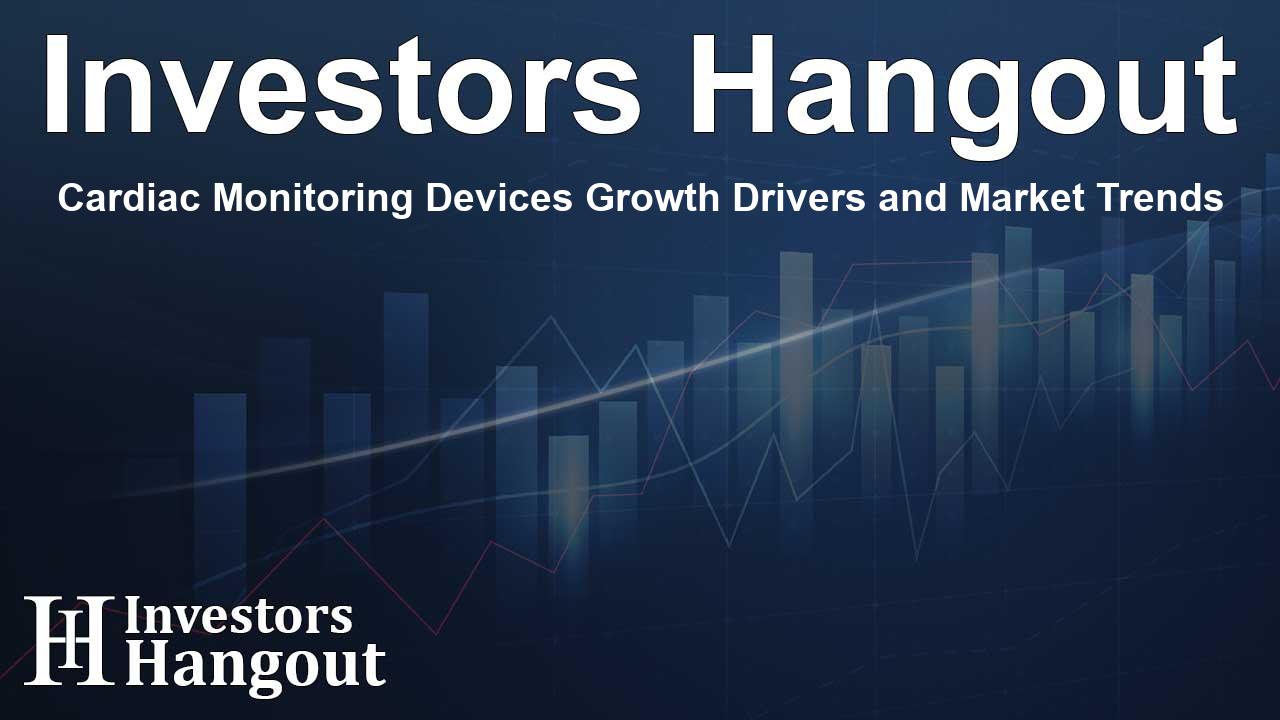Cardiac Monitoring Devices Growth Drivers and Market Trends

Understanding the Cardiac Monitoring Devices Market Growth
The cardiac monitoring devices market is experiencing significant expansion, projected to reach USD 48.58 billion. The demand for remote monitoring solutions and the early diagnosis of heart conditions are major contributing factors. As healthcare technology advances, the focus on such devices increases, highlighting their essential role in modern medicine.
Key Factors Driving Market Demand
The escalating prevalence of cardiovascular diseases (CVDs) globally is a core driver of the cardiac monitoring devices market. These innovative solutions facilitate real-time monitoring of heart health, enabling timely detection and intervention. Factors such as sedentary lifestyles, unhealthy diets, and increased stress levels have all culminated in a growing number of individuals suffering from heart-related issues. This surge in health concerns creates a heightened need for effective monitoring devices.
Supply Chain Dynamics in Cardiac Monitoring
The supply chain for cardiac monitoring devices is flourishing, fueled by innovations like wireless and portable monitoring technology. The increasing preference for at-home healthcare solutions further supports this growth. Key suppliers, including hospitals, diagnostic centers, and home health providers, are pivotal in making these devices accessible to consumers. Cost-effective and user-friendly devices enhance market penetration, thereby enabling greater access to cardiac health monitoring across various demographics.
Innovations Shaping the Future of Cardiac Care
Numerous advancements are defining the current landscape of cardiac monitoring devices. The integration of artificial intelligence (AI) and remote monitoring capabilities enhances the functionality and user experience of these technologies. This innovative shift is informing new product development and improving existing solutions.
Leading Companies in the Market
Several key players are significantly impacting the cardiac monitoring devices market. Companies such as Medtronic, Abbott, and Boston Scientific Corporation contribute to a competitive landscape that is rapidly evolving. Their commitment to innovation leads to the introduction of advanced devices that cater to the increasing demand for effective cardiac solutions. Collaborations and partnerships among these companies frequently lead to breakthroughs that enhance patient care.
Market Segment Insights
In 2023, cardiovascular devices dominated the market, capturing a significant share, primarily due to their critical role in diagnosing heart-related conditions. The demand for multi-parameter ECG monitors followed suit, as they are indispensable for tracking vital signs across various healthcare settings. The continuous push for better patient outcomes ensures a steady growth trend in these segments.
Regional Market Analysis
The North American market emerged as a leader in this sector, hosting over 35% of the global market share. High healthcare spending, advanced infrastructure, and a notable prevalence of cardiovascular diseases bolster this dominance. Europe follows closely, benefiting from heightened awareness of heart health and healthcare accessibility. Meanwhile, the Asia-Pacific region is anticipated to experience the fastest growth, driven by increased healthcare investments and government initiatives focused on heart health improvement.
Recent Developments in Cardiac Technology
Recent innovations highlight the rapid evolution of cardiac monitoring technologies. Monitra Health recently secured a US patent for its wireless cardiac monitoring technology, designed to improve patient compliance. Octagos Health's recent fundraising aims to propel AI-driven solutions that will significantly change cardiac care. Collaborations like that of OMRON Healthcare and AliveCor showcase a commitment to enhancing at-home cardiac monitoring options.
Frequently Asked Questions
What is the projected market size for cardiac monitoring devices?
The cardiac monitoring devices market is expected to reach around USD 48.58 billion by the end of the forecast period.
What factors are driving the growth of this market?
The major drivers include the rising incidence of cardiovascular diseases, advancements in technology, and a growing preference for remote monitoring solutions.
Which companies are the key players in this industry?
Significant contributors include Medtronic, Abbott, Boston Scientific Corporation, and GE Healthcare.
What are the major segments in the cardiac monitoring market?
The market is segmented by type, product type, and application, with cardiovascular devices and multi-parameter ECG monitors being predominant segments.
Where is the fastest growth expected in the cardiac monitoring market?
The fastest growth is anticipated in the Asia-Pacific region, driven by increasing healthcare investments and awareness of heart diseases.
About Investors Hangout
Investors Hangout is a leading online stock forum for financial discussion and learning, offering a wide range of free tools and resources. It draws in traders of all levels, who exchange market knowledge, investigate trading tactics, and keep an eye on industry developments in real time. Featuring financial articles, stock message boards, quotes, charts, company profiles, and live news updates. Through cooperative learning and a wealth of informational resources, it helps users from novices creating their first portfolios to experts honing their techniques. Join Investors Hangout today: https://investorshangout.com/
Disclaimer: The content of this article is solely for general informational purposes only; it does not represent legal, financial, or investment advice. Investors Hangout does not offer financial advice; the author is not a licensed financial advisor. Consult a qualified advisor before making any financial or investment decisions based on this article. The author's interpretation of publicly available data presented here; as a result, they should not be taken as advice to purchase, sell, or hold any securities mentioned or any other investments. If any of the material offered here is inaccurate, please contact us for corrections.